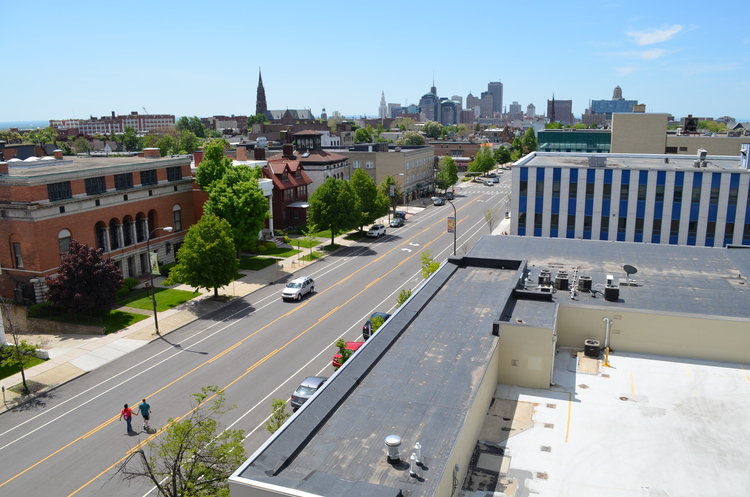Good Enough Urbanism?
Member News Digest - The latest and greatest from our member's blogs.
We have a long ways to go in rediscovering the syntax, rhythms, and vocabularies that constitute good places and make places worth caring about (credit to James Howard Kunstler). In the new blog of the same name, Patrick Prescott has created an "urban diary" that uses plainspoken language to observe and reflect on urban form. This Ross-anchored shopping development may not win a Charter award from the Congress for the New Urbanism, but it's a lot better urban form than the prototypical commercial strip center set way back from the street by a sea of parking. Imagine the stroad in front at half its current width and you're getting somewhere. In our quest to create places worth caring about once again, what is good enough? Make it too difficult to build urbanism, and developers will choose to build sprawl instead. We have to be willing to accept "Good Enough Urbanism" over no urbanism at all.
In a post that evokes some of the themes in the book "The Tipping Point", Granola Shotgun explores one close-in suburb in Portland and the emergent urbanism happening there. It questions the conclusion that older suburbs will all decline and wither away. It will leave you wondering, "why here, but not over there?" Absolutely fascinating.
The beauty of this business model is that any cheap ugly building in any uninspiring location can work so long as zoning and NIMBYs don’t get in the way. When your neighbors are industrial sheds and no name convenience stores you don’t get any push back.
The topic of children and cities is of increasing importance, especially for the millennial generation (of which I am one). The blog Family Friendly Cities explores issues around this theme. This past week featured an article from a suburban mother who contrasts a prior life in a walkable place to her current life in an unwalkable suburb. It's a poignant reminder of what's missing in suburbia.
[in the city] we made friends easily, but not through staged and planned playgroups, but through bumping into the same people in our town center and parks. Here, it requires planning and even money to meet people. These car-dependent towns are so large and spread out that people from all over come to the parks and I have never seen the same people twice. There is no sense of community, no town green where we gather for town events...
The isolation really hit me one day when my son and I were walking down the short dirt road that leads to the lake not long after we had moved in. As we approached the main road that was visible nearby he stopped, pointed and said, “Walk”. It broke my heart to say we couldn’t and to see his sad little face.
"The Future of Religious Spaces" explores some of the ways demographic and social trends are affecting churches around the country. Consolidation has affected how we shop, live, and even go to church (the "churching alone" phenomenon), with mega-campus churches increasingly common. How are neighborhood churches to respond? And yes, that's a photo of an actual church on the right.
In "The Improv Theater of Vibrant Streets" , Josh McCarty pens a love letter to Buffalo's Delaware Avenue. If you've been to Buffalo, for CNU22 or otherwise, you'll find a lot to relate to in this post. May it keep a Buffalonian warm on a winter's night.
#BuffaLove
You can check out the entire member blogroll on the Strong Towns member site. If you're a member with a blog and would like your work to show up there, please let us know about it.




